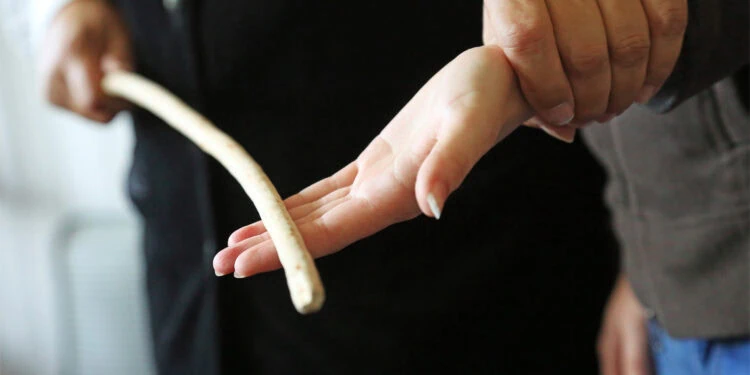Corporal Punishment Bans and Adolescent Suicide Rates: An International Ecological Study

Introduction
Adolescent suicide is a growing public health crisis, with suicide rates among teenagers increasing worldwide. Research consistently links childhood trauma, including physical punishment—to mental health struggles such as depression, self-harm, and suicidal ideation. A groundbreaking study by Laura Cramm MSc, Dr. Frank Elgar, and Dr. William Pickett has revealed a strong correlation between banning corporal punishment and a significant decline in adolescent suicide rates, particularly among teenage girls.
This study emphasizes that the effects of these bans become apparent after a decade, demonstrating the long-term impact of non-violent parenting and educational policies on mental health outcomes. The findings reinforce the global need to shift away from punitive discipline and embrace positive, non-violent approaches to child-rearing. This article examines the study’s findings in detail and provides actionable lessons for governments, communities, and parents on eliminating corporal punishment to safeguard children’s mental well-being and reduce suicide rates.
Key Findings of the Study
The study, which analyzed data from 97 countries, compared adolescent suicide rates in nations with full bans on corporal punishment (including in homes and schools) to those with partial or no bans.
1. Lower Adolescent Suicide Rates in Countries with Bans
- Countries that fully banned corporal punishment saw significantly lower adolescent suicide rates than those that allowed it.
- The decline in suicide rates became noticeable after 9–13 years, showing that the effects of non-violent discipline take time to materialize in society.
2. A Disproportionate Impact on Girls
- The suicide rate among teenage girls (15-19 years old) was 2.07 times higher in countries that had not banned corporal punishment.
- In countries where schools allowed corporal punishment, suicide rates among adolescent girls were 2.01 times higher than in nations where school beatings were banned.
3. Reinforcing Previous Research on Psychological Harm
- This study adds to a large body of evidence that links corporal punishment to:
- Higher levels of aggression
- Increased depression and anxiety
- Lower self-esteem
- Higher risk of self-harm and suicidal behavior
- Earlier research has shown that spanking, slapping, and other forms of physical punishment increase stress hormones in children, leading to lifelong mental health issues.
These findings have far-reaching implications for policymakers, educators, and caregivers who shape children’s environments. It is no longer a question of whether corporal punishment is harmful, the data confirms that it is, and eliminating it should be a global priority.
Lessons for Governments: Prioritizing Children’s Well-Being Through Policy Reforms
1. Enact and Enforce National Bans on Corporal Punishment
The most urgent step is for governments to fully outlaw corporal punishment in all settings:
- Home (parental discipline)
- Schools (both public and private)
- Alternative care settings (foster care, orphanages)
- Juvenile justice systems
Only 65 out of 195 countries have implemented full bans. Governments must act swiftly to protect children from legally sanctioned violence.
2. Align Policies with International Human Rights Standards
- The United Nations Convention on the Rights of the Child (UNCRC) explicitly calls for an end to all forms of violence against children.
- Sustainable Development Goal 16.2 urges nations to eliminate child abuse and violence, including corporal punishment.
- Countries should strengthen their legal frameworks to reflect these international commitments.
3. Expand Mental Health Services for Adolescents
- Governments must invest in school-based mental health programs, providing counseling services for students exposed to violence.
- Public health campaigns should raise awareness about adolescent mental health, encouraging early intervention for at-risk youths.
- Increased training for teachers and caregivers on identifying signs of abuse, depression, and suicidal ideation is critical.
4. Shift Cultural Perceptions Through Nationwide Campaigns
- Corporal punishment remains widely accepted in many societies as a form of discipline. Governments must challenge this mindset through:
- Public awareness campaigns emphasizing the dangers of corporal punishment.
- Media initiatives promoting non-violent discipline techniques.
- Training programs for parents, teachers, and community leaders.
Lessons for Communities: Creating Safe and Nurturing Environments
1. Schools Must Lead the Charge in Non-Violent Discipline
- Teachers must be trained in positive reinforcement techniques rather than relying on punitive measures.
- School policies should emphasize conflict resolution, mediation, and behavioral support.
- Student counseling services should be strengthened to support those facing abuse at home or school.
2. Engage Religious and Traditional Leaders in Awareness Efforts
- In many cultures, religious and traditional leaders reinforce corporal punishment as a discipline method.
- Engaging these leaders in conversations about child safeguarding and protection and alternative discipline methods can help shift community attitudes.
3. Establish Safe Spaces for Adolescents
- Communities should provide youth mentorship programs, peer support groups, and safe shelters for at-risk children.
- Mental health services should be accessible and free for adolescents, especially in rural and underserved areas.
4. Implement Community-Based Early Intervention Programs
- Anti-bullying initiatives and early intervention for high-risk youths can help prevent suicide by creating support networks for struggling teenagers.
Lessons for Parents: Raising Children Without Violence
1. Moving to the Culture of Discipline
Parents must understand that violence is not an effective teaching tool. Alternative methods include:
- Setting clear expectations and consequences
- Model positive behaviours as our precious children emulate what they see
- Teaching problem-solving and emotional regulation
2. Understand the Psychological Harm of Corporal Punishment
- Studies show that children who are hit internalize violence, leading to higher aggression, depression, and self-harm risks.
- Parents must recognize that physical punishment causes fear, not respect, and damages their relationship with their children.
3. Foster Open Communication and Emotional Support
- Adolescents must feel safe discussing their emotions with their parents.
- Parents should create a supportive, non-judgmental space where their children feel heard and understood.
4. Seek Professional Help When Needed
- If a child shows signs of emotional distress, consult a counselor or therapist early.
- Mental health support is not a sign of failure but a proactive step in ensuring a child’s well-being.
Conclusion: A Global Call to Action
The evidence is undeniable, corporal punishment contributes to higher adolescent suicide rates, especially among teenage girls. Countries that have banned physical discipline have seen significant reductions in youth suicide, aggression, and mental health struggles. Ending corporal punishment is not just about discipline, every child deserves to grow up in a world where their dignity, emotional well-being, and right to safety are respected.





